Overcooked: How Design Creates Teamwork
Chaotic cooking couch co-op concocts camaraderie
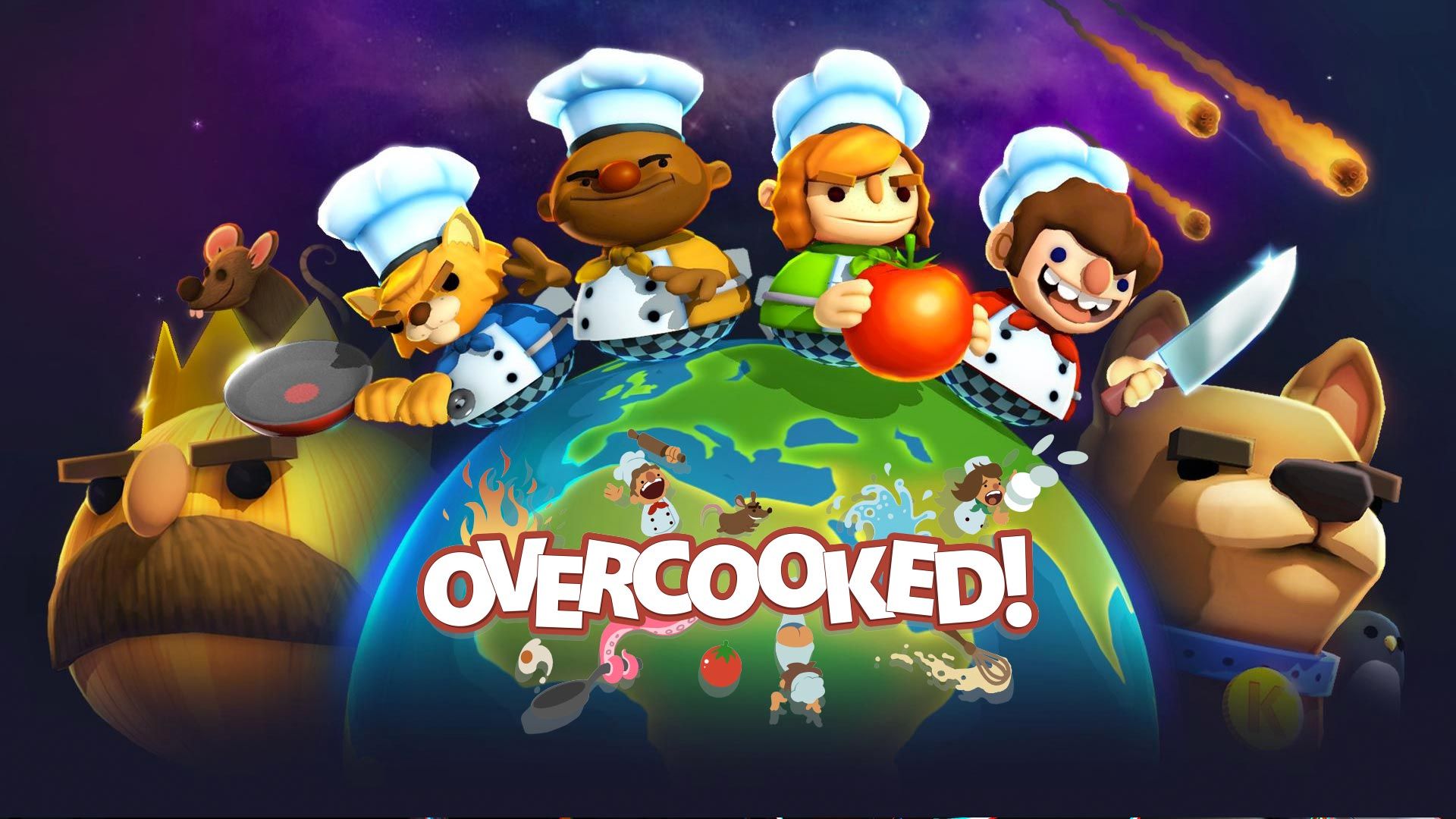
As multiplayer games have mushroomed in popularity, they’ve had to cater to different sets of players — people with varied skill levels, playing styles, and levels of comfort with being pushed headfirst into an online soup with a hundred strangers and some guns. While trying to design for the “ideal average” player, multiplayer game designers can face these challenges:
- Cast a wide net: How do I create a game that’s easy for newcomers to access but still challenging for skilled players?
- Keep things interesting: How do I ensure players don’t slip into predefined roles during the game, resulting in repetitive play?
- “Multi”player: How do I create design systems that incentivize players to work as a team?
There are endless ways games have approached and solved these design problems, but today I want to focus on a pair of gastronomic gems — Overcooked and Overcooked 2*. These games use design tricks and universally understood processes to craft delightful levels where you can play with friends of any skill level and still have a blast. Importantly, Overcoooked is a multiplayer game that’s best experienced when you’re in constant communication with your teammates.
*I’ll be using Overcooked as a shorthand for both games in this story.
A Restaurant Open To Everyone
Overcooked is a game where 1-4 players have to staff kitchens and fulfill the orders that appear on screen by chopping up ingredients, mixing and cooking them, and plating up food to specifications. There’s a simple intelligence in this choice of theme for the game. Everyone theoretically knows how to cook. By grounding the game’s world and rules in mental models that are familiar to all of us, Overcooked is a game that any of us can play.
Even folks inexperienced in the kitchen - like 8 year-olds - can follow the logic when the game says “tomato + lettuce = salad”. This rudimentary addition is basically how players are taught new recipes in the game, with popup windows imparting important information using visual shorthand.

As pending orders pile up on top of the screen, these same visual cues keep players focused on the next ingredient and task at hand.

The basic controls of the game are easy to grasp. Players move around with the keyboard or analogy stick, and use one single ‘interact’ button for every stage of making a dish - collecting ingredients, chopping them up, interacting with plates and frying pans, plating up the dish, and making the delivery all use the same button. There are other buttons to dash across the kitchen and (in Overcooked 2) to throw ingredients to teammates, but they don’t create any barriers of mechanical complexity for casual or lesser skilled players.
With a universal theme and easy controls, Overcooked casts its net wide and is accessible to players of widely varying skill levels. The challenge now is to not turn cooking into a chore by keeping players on their toes and always talking to each other.
Chaotic Kitchens Built For Teamwork
Because it has controls and game rules that are easy to pick up, Overcooked runs the risk of its players falling into predefined roles and optimizing the fun out of the game i.e. “You do the pizza, I’ll handle the fish and chips”. To avoid this monotony, Overcooked levels are designed for players to work together in some capacity.
This is evident from the very first level. A huge counter in the middle blocks the cutting station from the ingredients and cooking pot. Here’s how it would look if one cook tried to make the entire dish of onion soup…
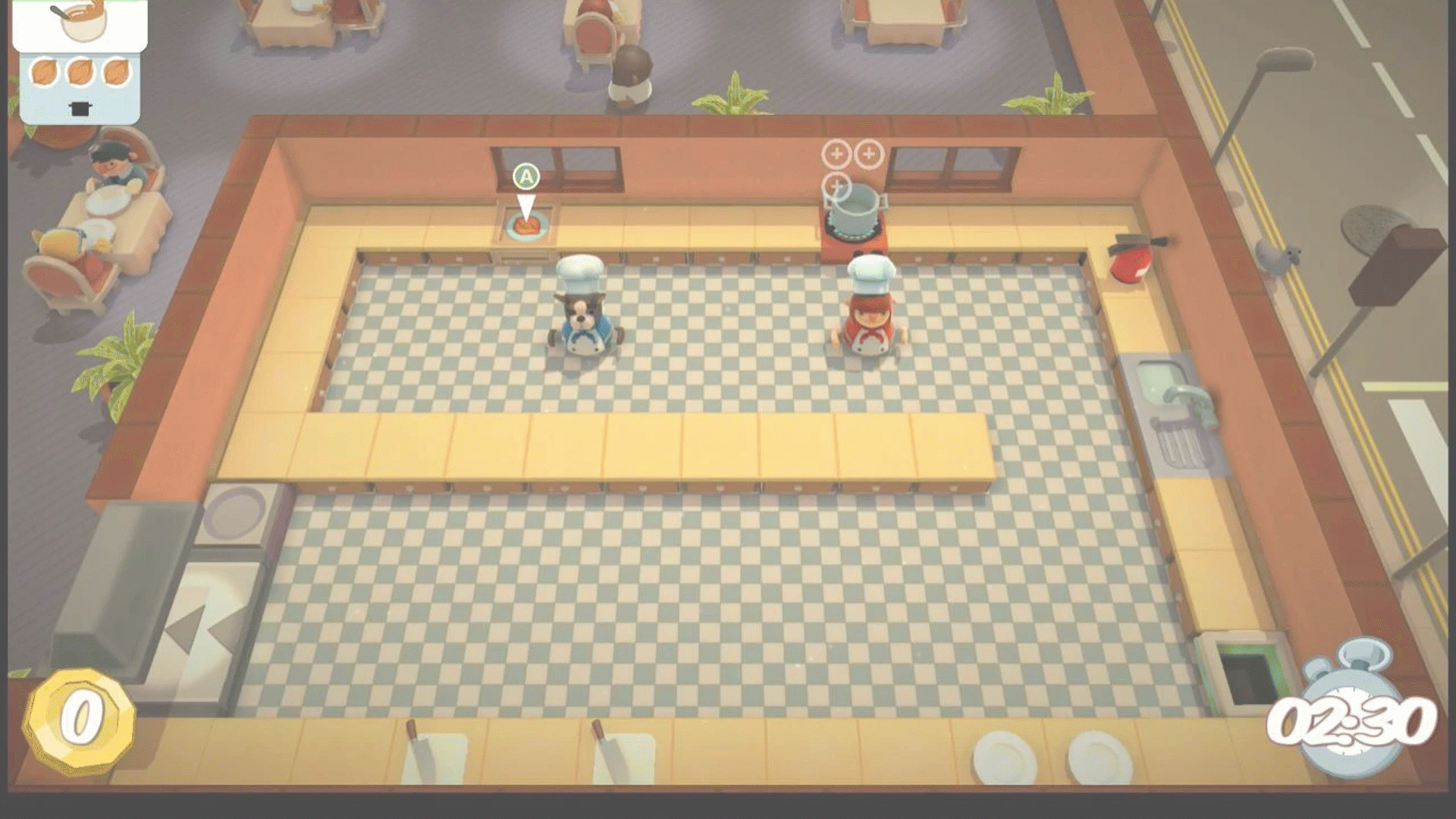
…and here’s how it would look if the counter in the middle was used to pass ingredients back and forth as both players worked on dishes together.

Overcooked’s level layouts always encourage players to talk, divvy up duties, and set a gameplan rather than just default to making dish A or dish B from muscle memory. What’s more, the kitchen layout often changes halfway into a level, forcing players to keep talking to each other and assess the changing environment.
For example, a kitchen on a pirate ship goes topsy-turvy as it enters rough waters…
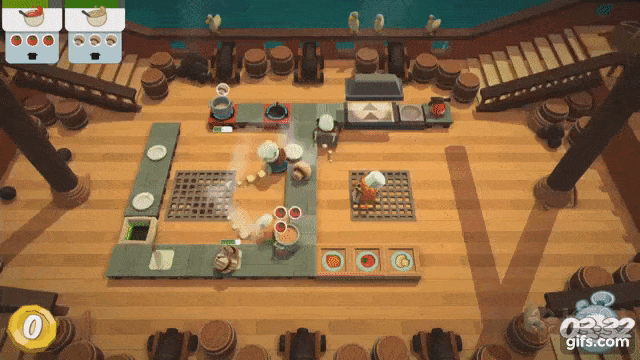
…an earthquake makes half the kitchen temporarily inaccessible…
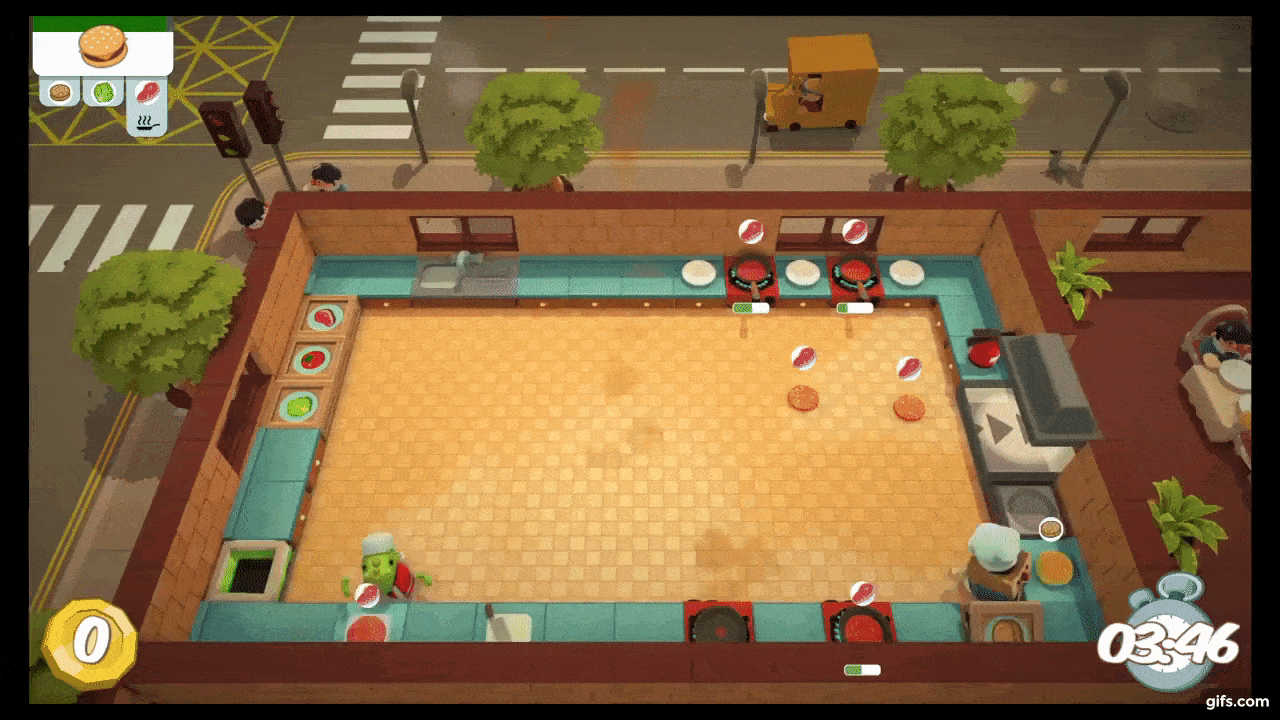
…and one kitchen is actually two trucks driving along the freeway.

By designing levels that encourage teamwork and having those levels change with time, Overcooked makes players endlessly shift, divide, and combine their roles while happily chattering away to each other.
Timers and Incentives
It’s not enough for a game’s level design to encourage teamwork — however empathetically these levels are built, there’s always a chance that players will engage with them in a different manner. It’s also important to provide players with incentives and goals that coax teamwork out of them.
Overcooked does two things here:
- Every cooking task and customer order has a set timer that’s visually communicated to the player. If players make a dish once, it’s possible to chart out how long each step takes and then improve upon it. They can also use this information to choose which order to make dishes in (quick, make the dishes whose timers are closest to running out). The GIF below shows timers for the tomatoes being cut in the foreground, the soup cooking in the background, and the customer orders stacking the top of the screen.
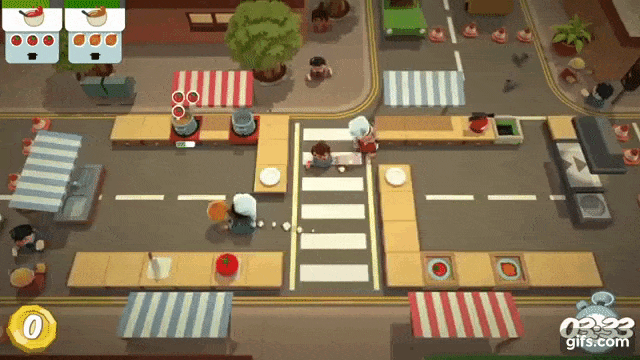
- Players are scored on how quickly they can deliver dishes. This takes the form of restaurant tips in the game world: the quicker players deliver a dish, the more tips they get.
By providing players with information (cooking timers) directly related to their goals (cook the most dishes within the time provided), Overcooked makes getting 1 star - the lowest rating to pass a level - almost too easy, while egging players on to go for 3 stars. And getting 3 stars requires carefully laying out plans, adapting to changes, and talking to your teammate.
There are certain disincentives at play that encourage teamwork as well. If players keep food cooking on the stove-top too long, it can catch fire. This results in a mad dash for the fire extinguisher and more real-time reassignment of roles as the players find the kitchen once again changing around them.
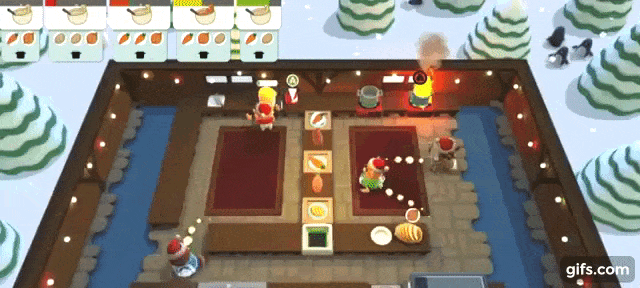
The Randomness of Washing Plates
Just when players think they’re working in harmony, spending every second cutting and frying and baking their way to 3-star perfection, a pile of unwashed plates can dirty up their pristine plans.
Unlike everything else in Overcooked, unwashed plates don’t appear with set timers, or at least the timers are not communicated to the player. There are a set number of plates per level, and once players have used all the plates up, they can’t deliver any more food unless they wash up. The actual washing up process does have a timer, but players can’t predict when the dirty plates will show up in the first place.
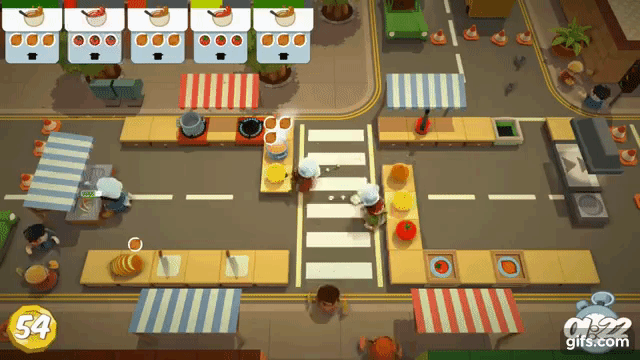
Since washing up doesn’t follow the pleasing temporal cadence that cooking does in Overcooked, players usually don’t have a dedicated “dish-washer” assigned when they begin a level. And that means on-the-fly communication and teamwork when the dreaded moment comes, even if the communication is just a hastily yelled “No YOU wash the plates this time!”.
Overcooked’s smiley, easygoing exterior hides clever design and incentive systems that are all geared towards encouraging teamwork and communication. Players communicate while making plans to conquer each kitchen, and players keep communicating while those plans go horribly wrong as unwashed dishes pile up or the kitchen suddenly splits in two.
Check out this video by Mark Brown if you’re interested in more design breakdowns of Overcooked.
For more stuff on game design, you can visit my Medium profile to read my other articles or follow me on Twitter. Thanks for reading!
